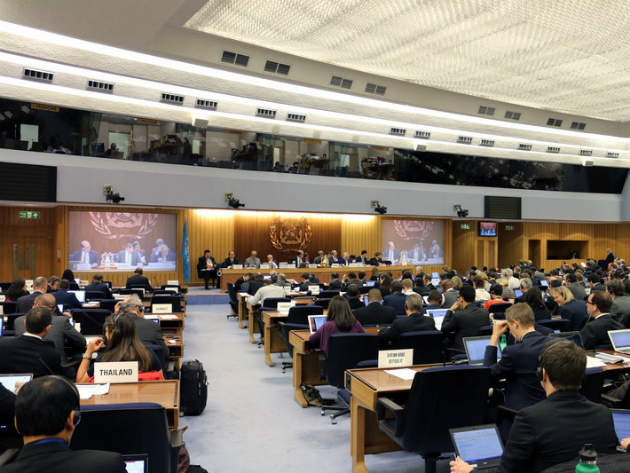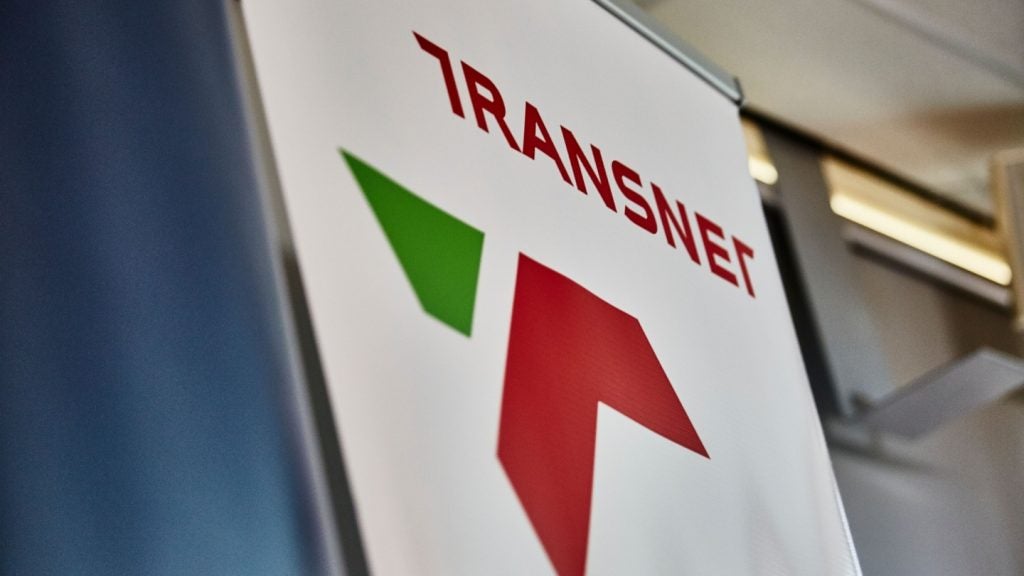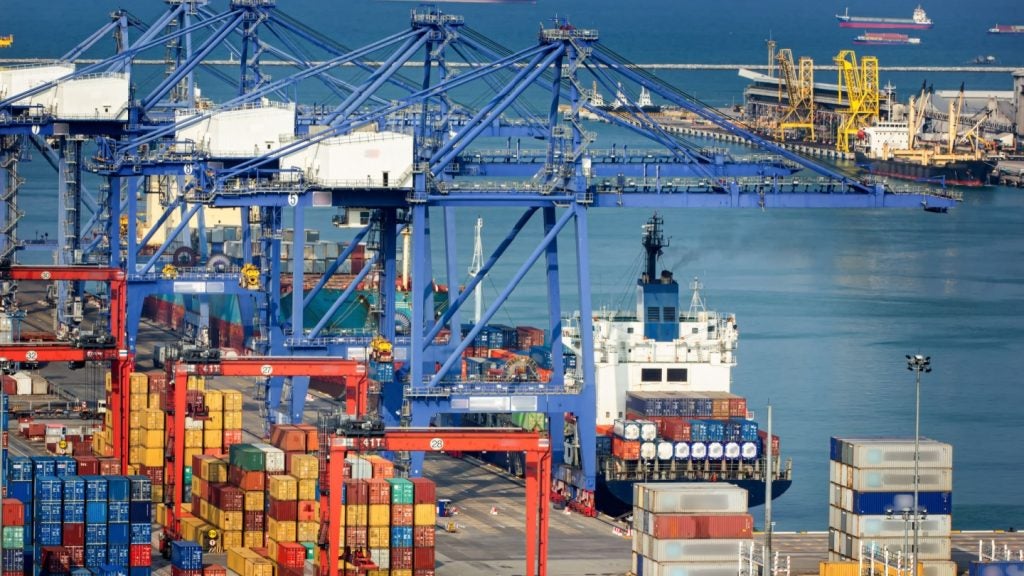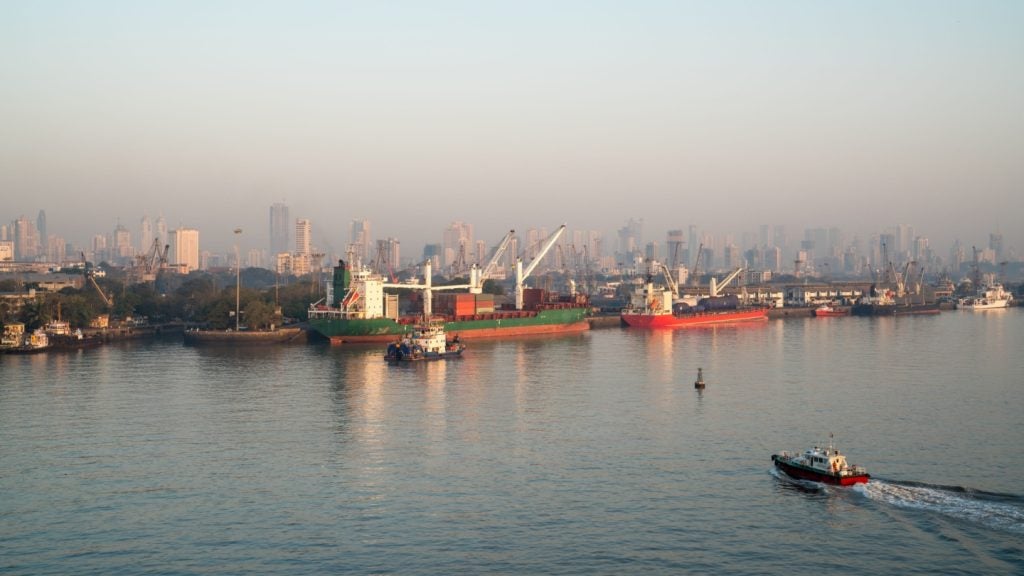
The Arctic is often used as a poster child for some of the most extreme consequences of climate change, as the environment here warms at a faster pace than any other region in the world.
In November last year, the Arctic Resilience Report, produced by an international team of researchers under the auspices of the Arctic Council, identified the 19 tipping points that had occurred in Arctic marine, freshwater and terrestrial ecosystems.
Despite the numerous red flags, the rapid melting of sea ice has been seen as a valuable commercial opportunity to increase Arctic shipping via new routes. Vessels travelling via new northern pathways can cut days off their journey times between the Pacific and North Atlantic ports.
In September last year, researchers from the University of Reading found that by 2050, opportunities to transit the Arctic will double for non-ice strengthened vessels.
As the World Wildlife Fund (WWF) points out, the Northern Sea Route is already in use by commercial ships, while the Northwest Passage could shorten travel time by two weeks compared to transit via the Panama Canal.
In light of these threats, leaders of native Arctic communities have come forward to stress the importance of protecting the sensitive waters, which have represented a critical lifeline for generations of indigenous people.
How well do you really know your competitors?
Access the most comprehensive Company Profiles on the market, powered by GlobalData. Save hours of research. Gain competitive edge.

Thank you!
Your download email will arrive shortly
Not ready to buy yet? Download a free sample
We are confident about the unique quality of our Company Profiles. However, we want you to make the most beneficial decision for your business, so we offer a free sample that you can download by submitting the below form
By GlobalDataChallenging the status-quo
During the 70th session of the International Maritime Organization’s (IMO) Marine Environment Protection Committee (MEPC70) in October last year, a panel of Arctic indigenous leaders from Alaska, Canada, and Russia made an impassionate appeal to the organisation for more control over decisions regarding Arctic shipping.
The historic meeting, which marked the first time that Arctic communities addressed IMO member states, highlighted the dangers of heavy fuel oil (HFO), as well as increased shipping patterns and their effects on marine mammals.
“We’re no longer a sleeping giant in the frozen North,” said Tagak Curley, founding member and the first president of the Inuit Tapirisat of Canada. “The Arctic needs a voice. We are here to be that, the status quo is not acceptable any longer.”
In his speech, Curley said that Inuit and Innu are often the first responders on the frontlines of climate change and catastrophes like oil spills, and requested that they have “a direct say in setting voluntary and mandatory measures to manage the growth in shipping”.
Curley joined a multitude of non-governmental organizations (NGOs) in calling for a ban on HFO use in the Arctic.
Spills of HFO were identified as the top threat from shipping by the eight-nation Arctic Council. At present, HFO powers 44% of the ships currently operating in the Arctic, and accounts for more than 75% of the fuel on-board Arctic ships, according to figures from the International Council on Clean Transportation (ICCT).
Heavy fuel ban still not delivered
The global campaign to ban HFO from Arctic waters has been extremely vocal, and in the past, former US President Barack Obama and Canadian Prime Minister Justin Trudeau have expressed their support to the cause.
A HFO spill in the Arctic would trigger an environmental crisis. Once spilled, the unique chemical characteristics of the toxic fuel would emulsify with the frozen water and ice, making it extremely difficult to remove. The impacts of a spill are also magnified by a significant response gap in the Arctic, where accident intervention times can take up to a few weeks due to tricky navigation.
“An oil spillage would basically end our traditional way of life,” said Hans Lennie, member of the Inuvik Hunters and Trappers Committee and the Inuvialuit Game Council. “There’s no rapid spillage plans, or any other preventable measures that are currently in place.
Two months after the conference, the US and Canada announced plans to phase out the use of HFO from vessels operating in Arctic waters. Their plan is to work in collaboration with Northern and indigenous partners and identify sustainable shipping lanes through their connected Arctic waters.
More recently, a group of shipping operators, NGOs and councils signed The Arctic Commitment, adding their voice to the ongoing international campaign for a HFO phase-out.
At a regulatory level, the start of this year also marked a big step forward for Arctic protection.
On 1 January, the IMO adopted the Polar Code, a binding international framework to protect the two polar regions from maritime risks. The Code imposed a set of ground rules specifically tailored for the harsh and difficult conditions of polar waters, and ensures the operational safety of ships using these routes.
However, the Code stops short of banning HFO use in Arctic waters.
A call for more collaboration
There is little optimism among indigenous communities at the current political climate, marine advocate Austin Ahmasuk said at the MEPC70.
“As you may know, climate change in the North is very profound. We are dealing with some very significant climate change impacts, rapid climatic changes that we have not seen before in history. There is a lot of frustration in Alaska with how political change is impacting our lives.
“Shipping of course is one of those political forces that we are dealing with,” Ahmasuk said. “We deal with the Coast Guard, various management agencies to address our shipping impacts but there is lots of frustration.”
Although commercial needs will undoubtedly push for an increasingly greater number of ships to tear their way through Arctic waters, an improved dialogue with the native communities and their leaders is the best way forward.
“We’d like to have input in the timing and frequency of shipping,” Lennie said. “We don’t know what’s being transported, or what’s being used for the ship’s fuel. We are on the frontlines, and we’re going to be the first responders. We need the tools to do that.
“Finally, we need a role at the national and international discussions to monitor and communicate with our vessels entering our area. Our way of life depends on it.”







